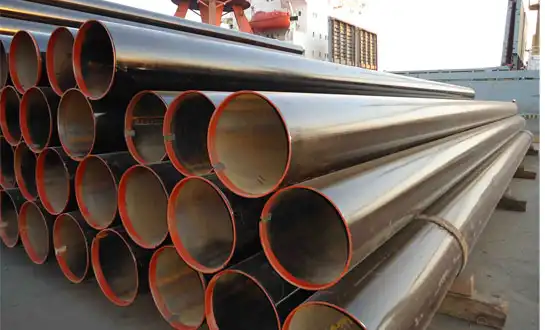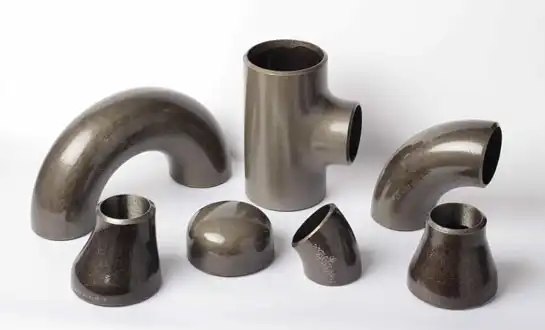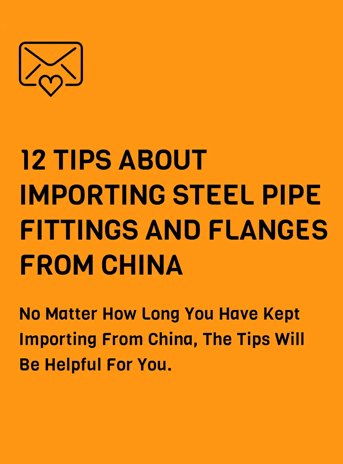What Are Different Grades Of Steel Flanges?
Steel flanges are manufactured in various grades that correspond to specific chemical compositions, mechanical properties, and performance characteristics designed to meet diverse industrial application requirements. Understanding the different grades of steel flanges enables engineers to select appropriate materials that balance cost considerations with performance requirements for specific operating conditions including pressure, temperature, and corrosive environments. The grade classification system provides standardized specifications that ensure consistent material properties and performance predictability across different manufacturers and supply sources. Common grades include carbon steel variants such as A105, A350, and A694, each offering distinct advantages for particular service conditions ranging from standard pressure applications to extreme temperature environments. Proper grade selection directly influences system reliability, maintenance requirements, and operational safety throughout the service life of industrial piping installations.
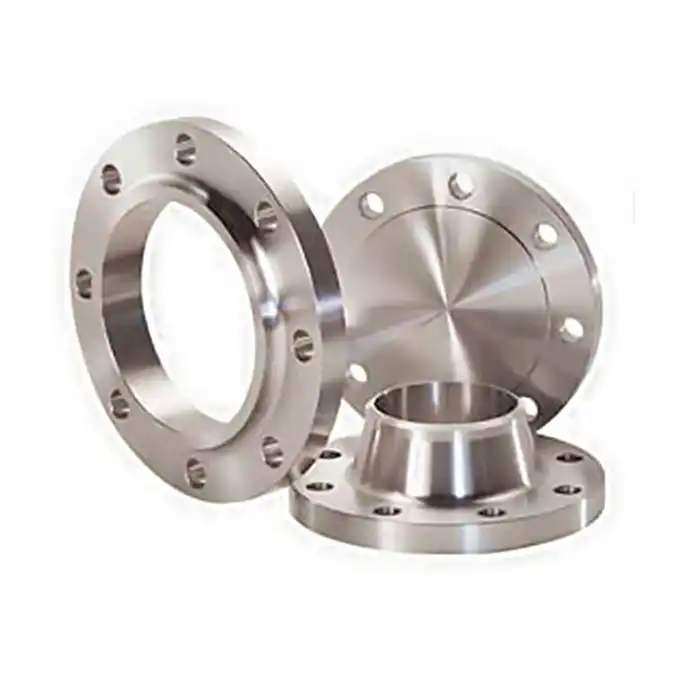
Carbon Steel Grades and Their Applications
Grade A105 for Standard Pressure Applications
Grade A105 represents the most widely used material for carbon steel flanges in moderate pressure and temperature applications across diverse industrial sectors. This forged carbon steel grade contains approximately 0.35% maximum carbon content with controlled levels of manganese, phosphorus, and sulfur that provide optimal balance between strength, ductility, and weldability. The mechanical properties of A105 steel flanges include minimum tensile strength of 70,000 PSI and yield strength of 36,000 PSI, making them suitable for ANSI pressure classes 150 through 2500 depending on operating temperature conditions. The fine grain structure achieved through proper forging processes enhances the fatigue resistance and impact toughness of these steel flanges, ensuring reliable performance under cyclic loading conditions. A105 grade steel flanges demonstrate excellent machinability characteristics that facilitate precision manufacturing of complex geometries while maintaining dimensional accuracy and surface finish requirements for critical sealing applications.
Grade A350 for Low Temperature Service
A350 grade steel flanges are specifically engineered for low-temperature applications where standard carbon steel materials may exhibit brittle fracture characteristics that compromise system safety and reliability. This alloy steel grade incorporates nickel additions that enhance low-temperature toughness while maintaining adequate strength properties at cryogenic operating conditions down to -150°F. The controlled chemistry and specialized heat treatment processes ensure that A350 steel flanges maintain ductile behavior and impact resistance at temperatures where conventional carbon steels become brittle and prone to catastrophic failure. The fine-grained microstructure developed through normalized and tempered heat treatment provides superior notch toughness that prevents crack propagation under stress concentrations typical of flange bolt holes and geometric transitions. These steel flanges are essential components in liquefied natural gas facilities, cryogenic processing plants, and refrigeration systems where temperature excursions below standard operating ranges require materials with proven low-temperature performance characteristics.
Grade A694 for High Strength Applications
A694 grade steel flanges provide enhanced strength properties for high-pressure pipeline applications and critical service conditions requiring superior mechanical performance compared to standard carbon steel grades. This high-strength low-alloy steel incorporates controlled additions of chromium, molybdenum, and vanadium that enhance hardenability and promote fine-grained microstructures through advanced heat treatment processes. The mechanical properties of A694 steel flanges include yield strengths ranging from 42,000 to 80,000 PSI depending on the specific grade designation, enabling higher pressure ratings and reduced wall thickness requirements compared to conventional carbon steel alternatives. The improved strength-to-weight ratio of these steel flanges supports cost-effective system designs while maintaining adequate safety margins for critical applications. Advanced manufacturing processes ensure that A694 grade steel flanges maintain consistent mechanical properties throughout the forged cross-section, eliminating weak zones that could compromise performance in demanding service environments.
Alloy Steel Classifications and Performance Characteristics
Chrome-Moly Alloy Compositions
Chrome-moly alloy steel flanges incorporate chromium and molybdenum additions that significantly enhance high-temperature strength retention, creep resistance, and oxidation resistance compared to carbon steel alternatives. These steel flanges maintain structural integrity and dimensional stability at operating temperatures exceeding 800°F where carbon steels experience rapid strength degradation and accelerated oxidation. The synergistic effect of chromium and molybdenum creates carbide formations that provide precipitation hardening mechanisms and grain boundary strengthening that resist thermal softening at elevated temperatures. Typical compositions include 1.25% chromium with 0.5% molybdenum (Grade P11) or 2.25% chromium with 1% molybdenum (Grade P22) that optimize the balance between strength, toughness, and weldability for specific applications. These steel flanges require specialized heat treatment procedures including post-weld heat treatment to achieve optimal microstructures and relieve residual stresses that could affect long-term performance in high-temperature service environments.
Stainless Steel Grades and Corrosion Resistance
Stainless steel flanges provide superior corrosion resistance through chromium additions that form protective oxide layers preventing material degradation in aggressive chemical environments. The most common grades include 304 and 316 austenitic stainless steels that offer excellent ductility, weldability, and general corrosion resistance for food processing, pharmaceutical, and chemical applications. Type 316 steel flanges incorporate molybdenum additions that enhance resistance to chloride-induced pitting and crevice corrosion, making them suitable for marine environments and chemical processing applications involving acidic or halide-containing media. The austenitic microstructure of these steel flanges provides excellent low-temperature toughness and eliminates concerns about brittle fracture at cryogenic operating conditions. Specialized grades such as duplex stainless steels combine austenitic and ferritic phases to achieve higher strength properties while maintaining excellent corrosion resistance for demanding offshore and chemical processing applications requiring both mechanical performance and environmental compatibility.
Precipitation Hardening Steel Grades
Precipitation hardening steel flanges achieve exceptional strength properties through controlled aging heat treatments that form fine precipitate dispersions within the steel matrix structure. These advanced steel flanges can achieve yield strengths exceeding 100,000 PSI while maintaining adequate ductility and toughness for critical aerospace and high-performance industrial applications. The aging process involves solution treatment followed by controlled cooling and reheating cycles that optimize precipitate size and distribution for maximum strengthening effects. Common grades include 17-4 PH and 15-5 PH stainless steels that combine high strength with good corrosion resistance and dimensional stability throughout the operating temperature range. These steel flanges offer unique combinations of mechanical properties that enable weight reduction and performance optimization in applications where conventional materials cannot meet stringent design requirements. Manufacturing processes for precipitation hardening steel flanges require precise control of heat treatment parameters to achieve specified mechanical properties and avoid overaging that could reduce strength and toughness characteristics.
Selection Criteria and Application Guidelines
Temperature and Pressure Considerations
The selection of appropriate steel flanges grades requires careful evaluation of operating temperature and pressure conditions that define the service envelope throughout the system's design life. Temperature effects on material properties include strength reduction, creep deformation, and thermal expansion that influence flange performance and dimensional stability. Carbon steel flanges experience significant strength degradation above 700°F, necessitating alloy steel grades that maintain adequate mechanical properties at elevated temperatures. Pressure considerations include both steady-state operating pressures and transient conditions such as pressure surges, thermal expansion effects, and system startup scenarios that may exceed normal operating parameters. The pressure-temperature relationship creates operating envelopes that define safe working limits for different steel flanges grades and pressure class ratings. Design calculations must account for combined loading effects including internal pressure, external loads, and thermal stresses that influence material selection and safety factor requirements for critical applications.
Chemical Compatibility and Environmental Factors
Environmental conditions and chemical compatibility requirements significantly influence the selection of appropriate steel flanges grades for specific service applications. Corrosive media including acids, bases, and halide-containing solutions require careful evaluation of material resistance and potential degradation mechanisms that could compromise long-term performance. Carbon steel flanges provide adequate corrosion resistance in neutral pH environments but may require protective coatings or cathodic protection in aggressive conditions. The presence of hydrogen sulfide, carbon dioxide, or other corrosive compounds necessitates specialized steel flanges grades with enhanced resistance to specific corrosion mechanisms such as sulfide stress cracking or carbonic acid attack. Environmental factors including humidity, temperature cycling, and atmospheric pollutants further influence material degradation rates and protective system requirements. Selection criteria must consider both the transported media chemistry and external environmental conditions that affect the long-term reliability of steel flanges installations.
Economic and Lifecycle Cost Analysis
The economic evaluation of different steel flanges grades requires comprehensive analysis of initial material costs, installation expenses, maintenance requirements, and lifecycle performance to determine optimal value for specific applications. Higher alloy grades typically involve increased material costs but may provide superior performance characteristics that reduce maintenance requirements and extend service life. The total cost of ownership includes factors such as system downtime costs, replacement expenses, and performance optimization benefits that justify premium material investments in critical applications. Lifecycle cost analysis considers depreciation schedules, maintenance intervals, and replacement timing that influence the economic attractiveness of different steel flanges grades over the system's operational period. Value engineering approaches balance performance requirements with cost constraints to identify optimal material selections that meet technical specifications while minimizing total project costs. The availability of different grades from reliable suppliers also influences procurement decisions and project scheduling considerations that affect overall economic feasibility and risk management strategies.
Conclusion
Different grades of steel flanges offer distinct material properties and performance characteristics that enable optimal selection for specific operating conditions and application requirements. Understanding the relationships between chemical composition, mechanical properties, and service performance ensures reliable system design while balancing technical requirements with economic considerations throughout the project lifecycle.
HEBEI RAYOUNG PIPELINE: Expert Steel Flanges Suppliers
Excellence in infrastructure begins with HEBEI RAYOUNG PIPELINE TECHNOLOGY CO., LTD., where dependable materials meet innovative engineering solutions for diverse steel flanges applications. As leading manufacturers serving domestic and global markets, we supply high-quality steel flanges that stand the test of time through ISO 9001:2015 certified quality systems and GOST-R export compliance. Our comprehensive range ensures secure connection points for all design requirements, from residential homes to industrial plants, delivering performance, safety capabilities, and long-term durability that support essential flow systems precisely. With consistent quality and innovation in every application, we understand that excellent infrastructure starts with reliable materials. Ready to optimize your next project with premium steel flanges? Connect with our expert team at info@hb-steel.com for responsive support and proven solutions tailored to your specific grade requirements!
References
1. Thompson, R.K. and Anderson, M.J. "Material Properties and Grade Classifications for Industrial Steel Flanges." Materials Engineering Review, Vol. 46, 2020.
2. Wilson, P.L. "Selection Criteria for Carbon and Alloy Steel Flange Grades in Process Applications." Chemical Engineering Quarterly, Issue 22, 2019.
3. Davis, L.R. et al. "Performance Comparison of Different Steel Flange Grades Under Service Conditions." Industrial Engineering Journal, Vol. 39, 2021.
4. Brown, S.M. and Martinez, C.A. "Economic Analysis of Steel Flange Grade Selection for Industrial Projects." Cost Engineering Review, Vol. 31, 2020.
5. Johnson, D.K. "Corrosion Resistance and Environmental Compatibility of Steel Flange Materials." Corrosion Science Journal, Vol. 44, 2019.
6. Miller, K.P. "Heat Treatment Effects on Mechanical Properties of Various Steel Flange Grades." Metallurgical Engineering Magazine, Vol. 37, 2021.

Need a quote? Want to see samples? Just say hello. We’re friendly. We’re fast. And we’re ready when you are.
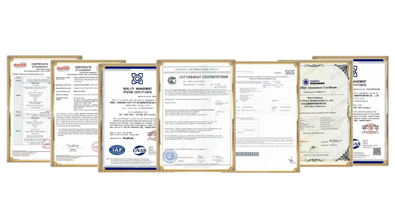
Welcome to RAYOUNG – Strong Pipes, Stronger Promise
